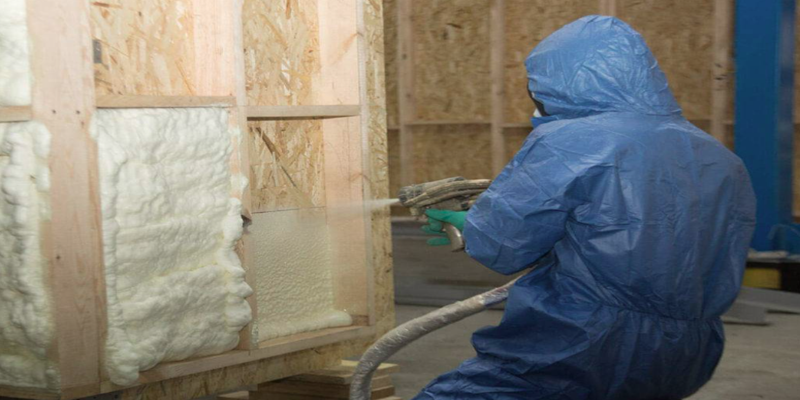As global environmental regulations tighten and sustainability becomes a top priority, polyurethane foam manufacturers are turning to greener, more efficient formulations. Two main types of polyurethane spray foam systems currently dominate the industry: water-blown polyurethane spray foam and hydrofluoroolefin (HFO) foaming systems. Each system offers different features, benefits, and challenges. This article will explore their differences and highlight the importance of catalysts, such as MXC-70, which can improve foam performance, especially in water-blown applications.
Understanding Water-Blown Polyurethane Spray Foam Systems
Water-blown polyurethane spray foam systems use water as a co-blowing agent to generate carbon dioxide (CO₂) by reacting with isocyanates. This CO₂ acts as the primary blowing agent, expanding the foam structure.
Advantages of Water-Blown Spray Foam:
- Environmentally Friendly: Since water does not contribute to ozone layer depletion or global warming, the system is considered an environmentally friendly alternative.
- Cost-Effective: Water is widely available and inexpensive compared to synthetic blowing agents.
- Regulatory Compliance: Meets environmental regulations that restrict the use of high GWP (global warming potential) blowing agents.
- Enhanced Adhesion: The reaction creates a strong bond between substrates, making it suitable for building applications.
Challenges of Water-blown Spray Foam:
- Lower R-Values: Water-blown foams tend to have lower insulating efficiency (R-values) than HFO-based foams.
- Increased Brittleness: Foams may become harder and more brittle over time, affecting durability.
- Higher Moisture Sensitivity: Performance can change with humidity levels, requiring careful formulation and processing.
The Rise of HFO-Based Spray Foam Systems
HFO-blown polyurethane spray foam systems utilize hydrofluoroolefins (HFOs) as the next generation blowing agent. These compounds deliver superior insulation performance while maintaining a low environmental impact.
Advantages of HFO Spray Foam:
- Higher R-Values: Better thermal resistance per inch of thickness, making it an excellent choice for energy-efficient insulation.
- Lower Emissions: HFOs have a very low GWP (typically less than 1), significantly reducing environmental impact.
-Enhanced Foam Quality: HFO-based foams produce a finer, more uniform cell structure, which improves mechanical properties and durability.
-Reduced Shrinkage: The closed-cell structure of HFO foams minimizes shrinkage, ensuring long-term performance.
Challenges of HFO Spray Foams:
-Higher Cost: Raw materials and formulations are typically more expensive than water-blown systems.
-Formulation Sensitivity: Accurate selection of catalysts and surfactants is required to optimize cure and performance.
Catalyst Selection: The Role of MXC-70 in Water-Blown Systems
One of the main challenges of water-blown polyurethane foam systems is to achieve smooth curing and adhesion while minimizing unwanted amine odor. This is where MXC-70 plays a key role.
Why Choose MXC-70 for Water-Blown Systems?
-Low Odor Formula: Unlike traditional amine catalysts, MXC-70 significantly reduces odor, making it ideal for interior applications.
-Smooth Rise Profile: It ensures controlled foaming and a stable rise profile, preventing foam collapse and defects.
-Improved Surface Cure: Enhances the curing process, resulting in a more uniform and durable foam surface.
-Excellent Adhesion: Increases bond strength between foam and substrate, which is critical in building and insulation applications.
-Compatibility with Water-Based Systems: Specifically designed to work efficiently with CO₂ blown polyurethane foams.
Conclusion
Both water-blown and HFO blown polyurethane spray foam systems offer unique advantages for different insulation and manufacturing needs. While HFO systems offer higher insulation efficiency, water-blown foam remains a cost-effective and environmentally friendly choice. Selecting the right catalyst is important to optimize foam performance, and MXC-70 is a broad choice for water-blown formulations with low odor, smooth curing, and enhanced adhesion.
For manufacturers looking to improve their polyurethane foam systems, choosing the right catalyst can make a significant difference. Contact us today to learn more about MXC-70 and how it can enhance your polyurethane spray foam formulations.
Post time: Apr-01-2025

